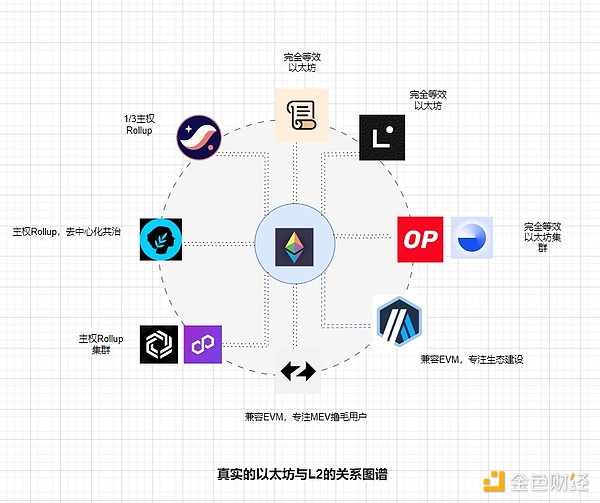Author: NingNing, independent researcher Source: X, @0xNing0x
Recently, the MIP-4 proposal of the Metis community was passed. This is the first among all L2 companies to start decentralized serializer testing. This also means that Metis has begun to remove the special feature of Rollup auxiliary wheels. action.
The concept of Rollup training wheels comes from Vitalik. In November 22, Vitalik posted on the Ethereum community forum to discuss milestones in the development of Rollup L2. He proposed to set three milestones, which are:
-- Stage 0: Full training wheel stage
Rollup L2 in stage 0 allows the use of a centralized sequencer to package and submit all state data of L2 to L1 (Ethereum main network), and at the same time deploy a Group verification smart contracts (such as Optimism's Optimism Gateway deployed on the Ethereum mainnet) ensure data availability and ensure that users can freely transfer assets without permission.
-- Stage 1: Limited training wheel stage
For Rollup L2 in phase 1, OP-Rollup needs to deploy a fraud proof in L1, and ZK-Rollup needs to deploy a validity proof in L1.
Requires a multi-signature "security committee" with the authority to overwrite the error output of fraud proofs and validity proofs
The upgrade mechanism is allowed, but the time lock has a delay of at least 7 days.
--Phase 2: No training wheel stage
There must be two independent fraud proof contracts or validity proof contracts that back up each other. When a state data conflict occurs, the "security committee" will adjust according to the situation
An upgrade mechanism is allowed, but the time lock has a delay of at least 30 days.
After publishing this post, Vitalik was very Bullish Rollup these 3 milestones. He was optimistic at the time that L2 would reach at least the stage after the Cancun upgrade. 1 milestone.
However, because the Cancun upgrade was split from the Shanghai upgrade into an independent major upgrade, and the deployment time has been repeatedly delayed, all Rollup L2s are still in stage 0.
There are two reasons for this phenomenon:
--Achieving fraud proof The smart contract structure of the mechanism is complex, requires a large amount of on-chain computing and verification resources, and the operating cost is very high. The probability of events requiring fraud challenges is very low. At least so far, there has not been a single state conflict event among the many OP-Rollup L2s.
It is uneconomical to invest high costs for small probability events. Even if economic factors are not considered but only to enhance security, the L2 development team hopes to deploy it after the Cancun upgrade significantly reduces L2 operating costs.
--Some L2s are vested interests in stage 0. Relying on the L2 hair-raising craze and the centralized serializer, it can generate operating income of more than ten million US dollars per month from users. They lack the motivation to move into Phase 1 or Phase 2.
Faced with the status quo of L2, which is still and addicted to stage 0, the patience of the market and users has gradually exhausted.
Recently, there have been more and more criticisms of L2, focusing on the delay in launching fraud proof testnet verification, serializer centralization, and endless tasks for MEV users. Gas fees, etc.
Faced with these criticisms, some L2s use the ideology of Ethereum Maxi as a shield, believing that decentralized sequencers establish independent/semi-independent consensus. Decoupled from Ethereum.

Some L2 believe that there is a fractal relationship between L2 and Ethereum. The decentralized sequencer is, to a certain extent, the fractal of the Ethereum PoS consensus mechanism at the L2 level.

L2s that hold this attitude include Starknet and Metis. Among them, Starknet chooses 1/3 of the Gas fee protocol token STRK to pay for balance, which can be said to be 1/3 of the sovereign rollup. Metis, as "Vitalik fucking L2", is more determined in choosing the path of sovereign Rollup and decisively started decentralized serializer testing this month.
Centralized serializer or decentralized serializer, this is a huge question for every L2.
Let’s put aside the political correctness of Ethereum’s legitimacy and only analyze the methodology of L2 construction.
The current L2 construction methodology is vaguely divided into two factions. One group insists on the supremacy of the legitimacy of Ethereum and the supremacy of developers, and uses fraud proof/validity proof technical solutions to achieve minimal trust and decentralization of L2. The other group believes that the community is the largest and users are king, and uses the architecture of decentralized serializer + sovereign rollup to achieve L2 decentralization.
We have no intention to intervene in this dispute, but just want to state a basic fact: the web3 protocol is not a product of web2, and the process of building the web3 protocol is more similar to building a biosphere Ecology, rather than building an industrial product like web2 products.
This is why the Metis community emphasizes the principles of diversity, tolerance, and sharing. This is also why Metis still promotes the decentralization of the sequencer despite some doubts from Ethereum Maxi. change.
Economic decentralization and community joint governance may be the passcode for L2’s decentralization path.
Finally, when the Bitcoin ecosystem and the rise of modular public chains compete with the Ethereum ecosystem for the right to define the future Web3 paradigm, the Ethereum ecosystem needs to restrain e/acc Impulse to listen to the voices of the community more than ever.
 Miyuki
Miyuki







